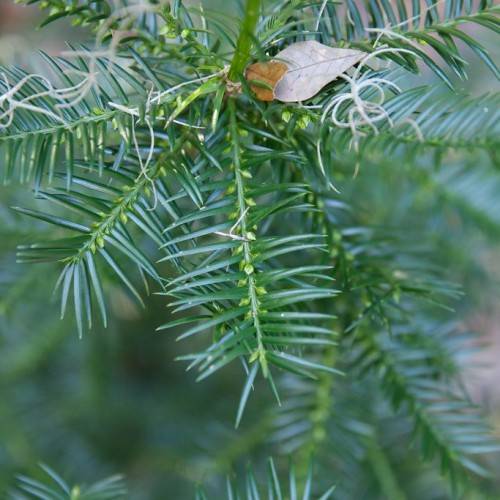
stinking cedar
Torreya taxifolia
Cycle:
Perennial
Watering:
Average
Hardiness Zone:
5 - 9
Flowers:
Flowers
Sun:
Part shade
Cones:
Yes
Leaf:
Yes
Growth Rate:
Low
Maintenance:
High
Drought Tolerant:
Yes
Salt Tolerant:
Yes
Care Level:
Medium
watering
Stinking cedar should be watered regularly, when the soil is dry to the touch, but allow for 1 day of drying out between waterings. Water deeply enough to saturate the soil and encourage deep root growth. If the soil is allowed to dry out too much before the next watering, it can cause the leaves to droop, yellow, and/or drop. Generally, this species should be watered once per week, or up to twice weekly in hotter weather. If conditions warrant, water more frequently in extreme heat or in dry climates.
sunlight
Stinking Cedar (Torreya taxifolia) needs direct sunlight for at least part of the day. This species will do best if placed in full sun, although it can tolerate some shade. Generally, Stinking Cedar should have between 6-8 hours of direct sun per day, either in the morning or afternoon. It is important to note that this species is not tolerant of extreme temperatures and should be placed in an area with protection from heat and wind. As with all plants, Stinking Cedar should be given time to adjust to its new climate before being exposed to full sun for extended periods of time.
pruning
Stinking Cedar should be pruned in late winter or early spring, before new growth begins to emerge. Prune off any dead or diseased branches, and then selectively prune to improve the form of the plant. Remove any branches that cross, rub, or are too close to each other. Remove branches growing toward the center of the plant, as well as any that do not fit naturally into the overall form. Prune only a few branches at a time and remove no more than 1-third of the live foliage at any 1 time.
